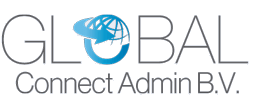At the recent XBRL Europe conference (13-14 June 2022), Jean-Phillippe Rabine from the European Commission (EC) provided an update on the revolutionary European Single Access Point (ESAP). With the ESAP platform, more than 150,000 entities file data to create a centralized search system covering all public information on companies or financial products. This way, enterprises are more integrated into the market and cross-country investors can establish contact in an uncomplicated manner.
The update on the developments of the European Single Access Point (ESAP) entails the goal to provide unified access to a huge amount of information, relevant to investors of all sizes. This unified access is projected to cover the regulated activities of over 150,000 companies. This target group includes investment funds, insurance companies, public companies, banks, rating agencies and around 45,000 large private companies that will disclose sustainability information on the ESAP platform. In general, ESAP is a centralised search system that makes companies more visible to cross-border investors and promotes market integration. In this light, the ESG data provided by the companies will assist in the transition to a green economy.
While the ESAP platform is comparable to EDGAR and EDINET, the main difference in ESAP is to be far-reaching and thus more information gathering can be possible. However, the establishment and the undertaking of ESAP are fairly complicated. The requirement to aggregate and/or index data provided to the national registers and regulators from over 27 countries, as well as numerous EU data collections, is the foundation for the complicated system of ESAP. The platform will be owned by the European Securities and Markets Authority (ESMA), operated by ESMA in cooperation with EBA and EIOPA, and will have input from several other European agencies.
ESAP has high relevance to Inline XBRL filings, as it will be responsible to host all EU-filed financial statements made in European Single Electronic Format (ESEF). Moreover, on par with these statements, ESAP also hosts the upcoming sustainability disclosures as readable in the CSRD. In the long term, the format for the data hosted by ESAP can change from Inline XBRL to various formats. However, while the platform might not be necessarily linked to Inline XBRL in the long run, the European Commission (EC) will have the power to direct that specific disclosures need to be made utilizing a specific machine-readable format.
The intention is that ESAP is accessible free of charge and includes actions covering access via API and bulk downloads. However, ESMA can charge fees on certain occasions or services. To conclude, “the phasing-in phase of legislation and the ESAP system will commence in 2024 and drive through to at least 2026”. Here, Europe’s aims for ESAP are wide-ranging with improvements to capital allocations, providing assistance towards the green economy, and integrating financial services.
Sources
https://www.xbrl.org/news/esap-latest-eu-drives-towards-transparency/
https://www.xbrleurope.org/?p=5268
https://www.xbrleurope.org/wp-content/uploads/2022/04/1-Rabine-ESAP-XBRL-slide-pack-1.pdf

